About me and why I created this physics website.
Heat Transfer - For Kids
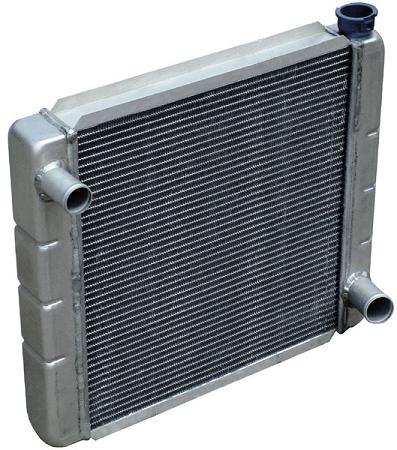
Automobile Radiator. Source: http://en.wikipedia.org/wiki/Radiator. Author: http://en.wikipedia.org/wiki/User:Bill_Wrigley
The science of heat transfer is a broad subject which, in its most basic terms, is used to describe the transfer of heat energy from one place to another. Heat energy always moves from a higher temperature area to a lower temperature area, and the way in which this happens, along with ways to increase this effect or decrease it, is the main focus of the science of heat transfer.
For example, consider the insulation in your home. The purpose of this insulation is to reduce the flow of heat from inside the home to the outside during cold weather. Doing this will mean that you will have lower costs for heating inside the home.
Animals have their own form of insulation which helps them keep warm in cold weather. It serves the same purpose as wearing a coat. Two of the main kinds of insulation that animals have are feathers and fur. The picture below shows a duck whose thick covering of feathers does a good job of keeping it warm.
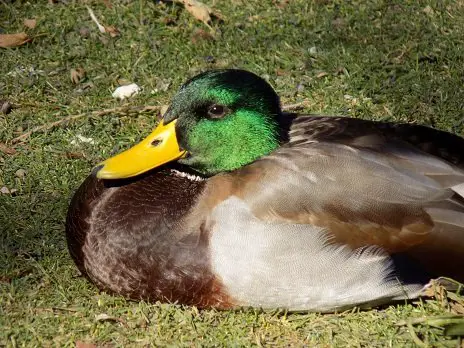
This next picture is of a squirrel. The thick covering of fur also does a good job of keeping it warm.
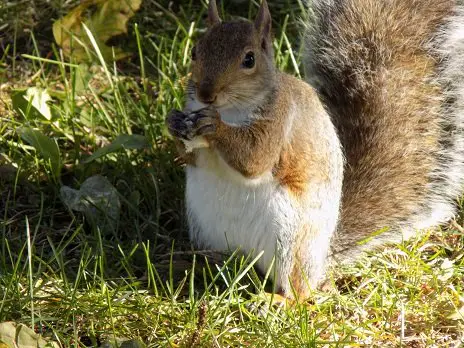
A heat exchanger has the opposite purpose to that of insulation. It is a device used to enable the transfer of heat energy from one place to another, whereas insulation is used to reduce the transfer of heat energy from one place to another. An automobile radiator, shown in the first picture, is an example of a heat exchanger. It is used to remove heat from the engine and transfer it to the atmosphere. This prevents the engine from overheating. Heat exchangers use many fins to increase the rate of heat transfer. Fins increase the rate of heat transfer by increasing the surface area from which heat transfer occurs.
Insulation Experiment
You can do an experiment to see how good of an insulator different materials are. Two common low cost materials you can experiment with are sawdust and leaves. Years ago I did an experiment with leaves and found that it's a surprisingly good insulator. What I did was get a bag of ice and placed it inside a garbage bag full of leaves (shown below). I fully immersed the bag inside the leaves and then I timed how long it took for the bag of ice to melt completely. It took several days, which shows just how effective leaves are as an insulator. The thing that makes leaves such a good insulator is the air that gets trapped in between the leaves. Air is a good insulator when it gets trapped in small areas, which is why it greatly enhances the insulation ability of leaves. Feathers and fur are also good insulators for the same reason. When animals puff out their fur or feathers they trap more air inside of them and this increases their insulation ability. Animals do this when the weather is cold.
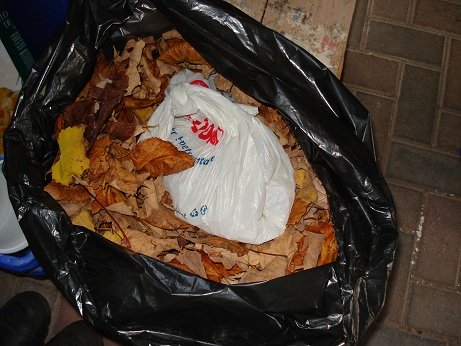
The Different Types Of Heat Transfer
There are three main types of heat transfer. They are conduction, convection, and radiation. The first kind (conduction) occurs when two objects of different temperature are placed in direct contact with each other. When this happens, heat energy moves out of the warmer object and into the cooler object. This occurs until both objects are at the same temperature. The figure below illustrates this.
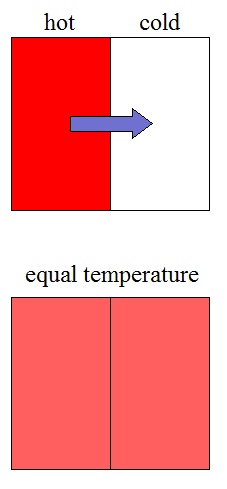
The second type of heat transfer is convection. It occurs when a fluid physically moves into an area of different temperature and then heats this area up, or cools it down, as a result. An example of this is a vent blowing air into a room to heat it up or cool it down (shown below). On cold winter days a furnace vent would blow warm air into a cold room to heat it up, and on hot summer days the vent would blow cool air into the warm room to cool it down.
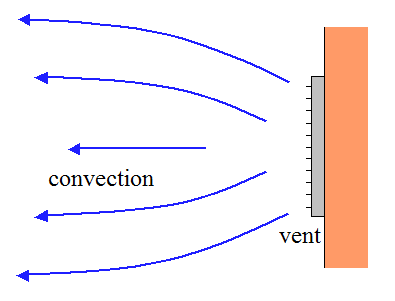
The third type of heat transfer is radiation. It occurs when heat energy is gained or lost by way of electromagnetic radiation. The best example of this is the sun, shown below. The electromagnetic radiation from the hot sun reaches the cooler earth and heats it up as a result. When the sun goes behind a cloud this radiation is mostly blocked and the sun is not able to heat the earth as much.
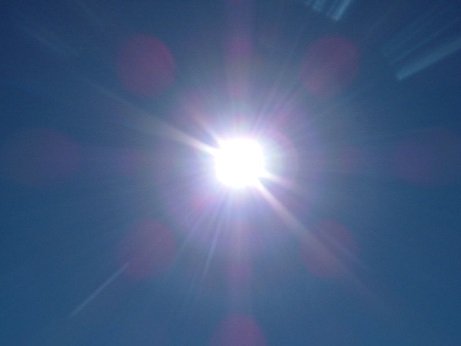
Source: http://commons.wikimedia.org/wiki/File:The_sun1.jpg. Author: http://en.wikipedia.org/wiki/User:Lykaestria
Electromagnetic radiation can also result in cooling. For example, on a clear night with no clouds, a warm object placed outdoors will lose its heat energy to the night sky which is at a much lower temperature than the object. The object will lose its heat energy to the night sky by way of electromagnetic radiation being emitted from itself to the cold sky.
Return to Physics For Kids page
Return to Real World Physics Problems home page